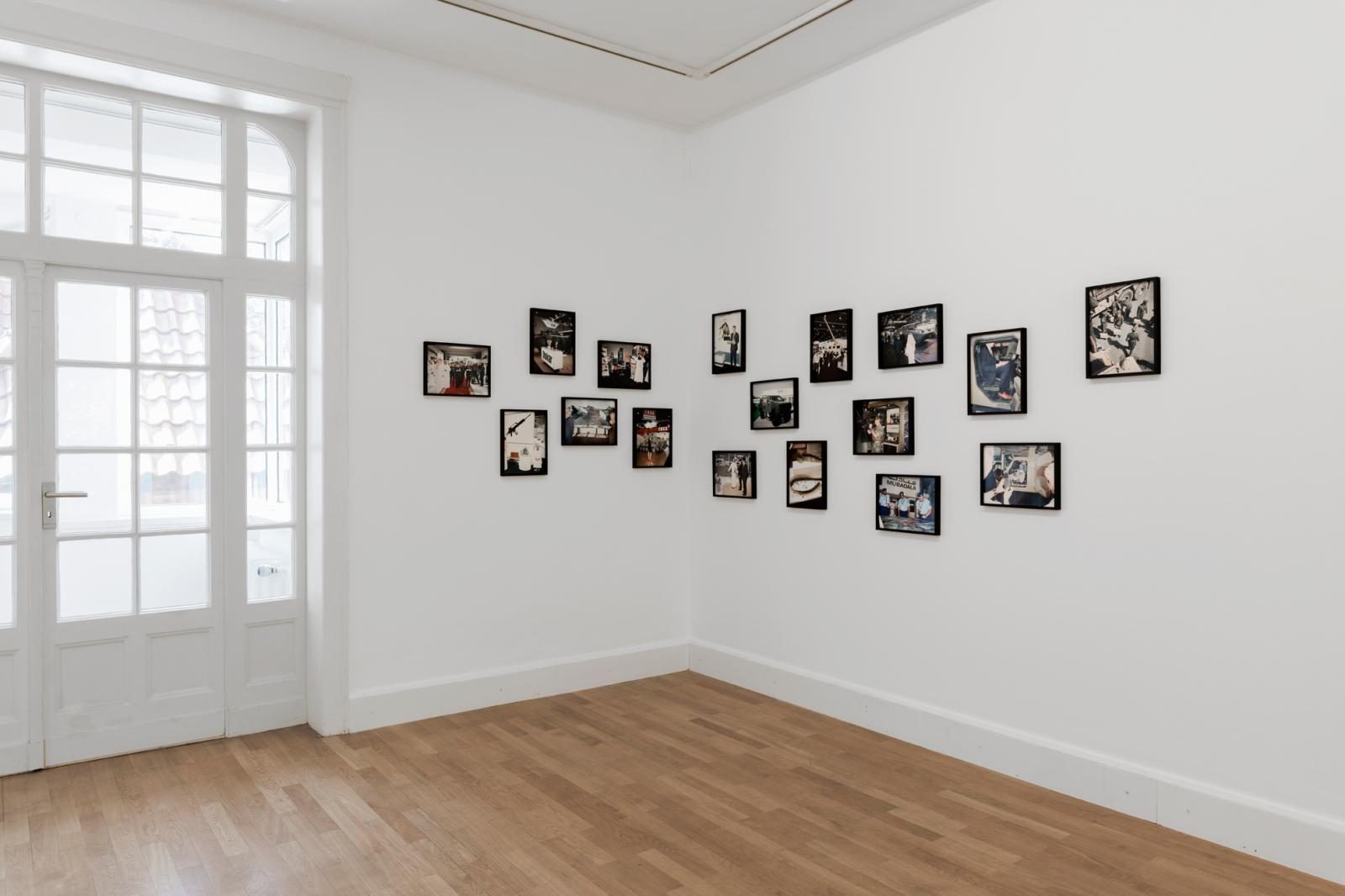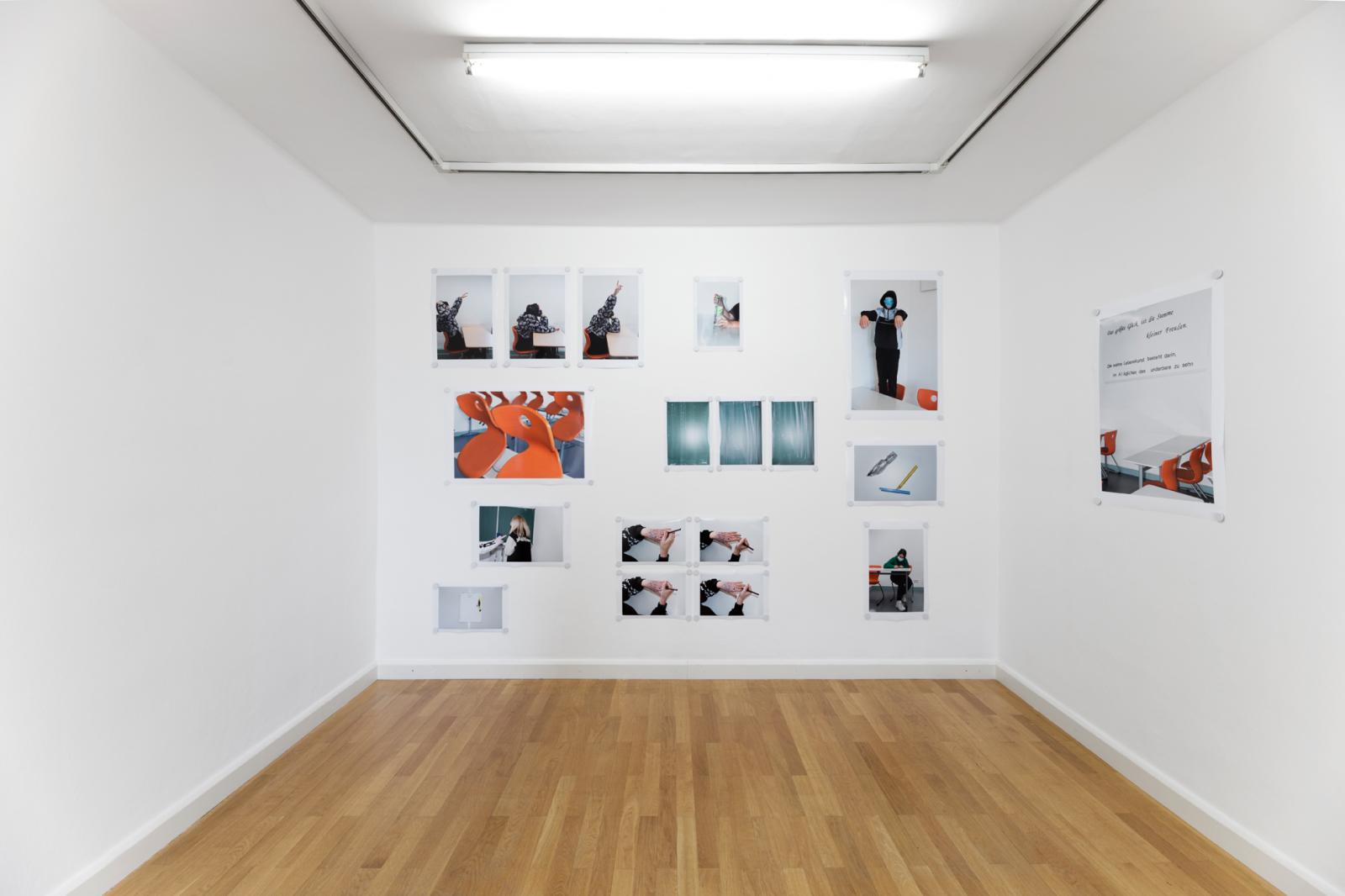09. Juli–06. Nov. 2022
it takes time to build and a second to wreck it
Eiko Grimberg, Susanne Keichel, Anton Roland Laub, Eva Leitolf, Oliver Ressler, Julian Röder
In 2022, Europe is in crisis. Triggered by a pandemic, war, migration and global warming, this circumstance is seen as an historic turning or tipping point in the evolution of earth’s climate. Photographs have become the central means of communication everywhere, be it for political staging, in reporting or on social media channels. Images circulate faster than they can be verified, conveying their messages with greater immediacy and efficacy than text.
Against the backdrop of a staggering and challenging pace of the commentaries and impulsive reactions to these images might present challenges, some artists insist on addressing certain issues over extended periods of time – often over years – and afford themselves the luxury of reflection and research. The outcomes are concentrated series of works which generate a differentiated interrelationships and contexts.
Travel and research form the working basis for the artists presented in the exhibition it takes time to build – and a second to wreck it. Common here is a serial approach to the photographic medium and a long-term commitment to a given subject matter. Not only do they examine their specific themes in great detail, they also attend to how they evolve and find ways of translating societal dynamics. They visit places not everyone can access – locations where conflicts come to the surface. Unlike investigative documentary photographs, however, calling the images into question remains a possibility. The artists here present subjective images and contexts. Their photographs prove nothing; instead they open up a space for thought and invite us to reflect on how European societies are constituted.
Eiko Grimberg (b. 1971 Karlsruhe) lives and works in Berlin. Since 2011, Eiko Grimberg has followed the controversial new construction of the Berlin Palace, which reached its current conclusion with the opening of the Humboldt Forum in 2021. In his series of works, Eiko Grimberg presents various historical layers andremnants of the former buildings from the site which are still located in Berlin. A search for the spoils leads him to various storage facilities, construction sites and mainly to the Friedrichsfelde zoo. Created is an essay in which fragments not only of GDR and FRG history surface but also of National Socialism and the German Empire. Grimberg focuses frequently on architectural crossovers and ruptures, he collects anecdotes and creates photographic parallels that at times seem too abstruse to be believable. Ultimately, it remains unclear whether we are observing extensive research or the desire to rewrite history itself.
Susanne Keichel (b. 1981 Dresden) lives and works in Dresden. Since the summer of 2015, when hundreds of thousands of people embarked on a perilous journey to Europe via the Mediterranean and the Balkan route, Susanne Keichel has been concerned with migration – in particular with images of migration circulating in the media. Two types of images dominate this theme: the visualisation of an anonymous ‘flow of refugees’ as well as poignant individual scenes depicting sadness, exhaustion and hopelessness. Keichel seeks to distance herself from these image clichés without ignoring her subject matter. She visits locations where refugees are housed, watches demonstrations and takes courtroom photographs. But her small-format analogue photographs do not offer the linear character of reportage, and rarely do they present people. Instead, she collects fragments of the present embodying the social atmosphere and mood in Germany.
Anton Roland Laub (b. 1974 Bucharest) lives and works in Berlin. Anton Roland Laub was born and raised in Bucharest. He lived through a phase of the city in which a third of its historical centre was demolished under the slogan of ‘systematisation’, in order to create wide avenues in honour of the Ceaușescu regime. Even in a very religious society, this culture of demolition did not stop at church buildings. But seven churches were spared from being razed, although they were dealt with in an absurd way: transported on rails and hidden behind residential towers. Anton Roland Laub’s Mobile Churches series reveals how power is expressed in architecture.
Eva Leitolf (b. 1966 Würzburg) lives and works in Bozen and in Chiemgau. In her work Postcards from Europe, Eva Leitolf examines how the European Union deals with its external borders. In doing so, she combines images and texts which convey very different messages. While the photographs often depict everyday landscapes and banal details, her carefully researched texts describe past conflicts. Media reports, police files, press releases, on-site research and interviews form the basis for these texts. The tension between the often-dramatic incidents and the uneventful images ultimately raises questions about the connection between history and the present, between mediated narrative and lived experience.
Oliver Ressler (b. 1970 Knittelfeld) lives and works in Vienna. Oliver Ressler’s work deals intensively with global warming and protest movements. Both the Hambach Forest and the discussion-based and organisational forms of international resistance movements such as Legal Sol, Extinction Rebellion, Climacció and Fridays for Future are reflected in his videos. In addition, Ressler develops future prognoses. In the series Reclaiming Abundance, he portrays Austrian infrastructures connected to forms of fossil-fuel energy and the production of CO2. Ressler imagines alternative futures for these locations. How will these sites be used in 2050 after global temperatures have continued to rise and unleashed disasters? In this way, Oliver Ressler stages the tipping-point situation we find ourselves in globally and creates future scenarios we must decide on today.
Julian Röder (b. 1981 Erfurt) lives and works in Berlin. In his research, Julian Röder focuses on executive violence. In series such as Mission and Task or World of Warfare, he portrays border protection apparatuses and the arms trade. He shows actual practices and places where politics, military and economy intersect and are cultivated by enlightened, Western societies. It is a bewildering simultaneity of technical innovation, everyday business activities, profit maximisation and organised destruction which finds expression in these series of works.
The exhibition is supported by Stiftung Niedersachsen, Katrin und Uwe Hollweg Stiftung and Niedersächsisches Ministerium für Wissenschaft und Kultur.













